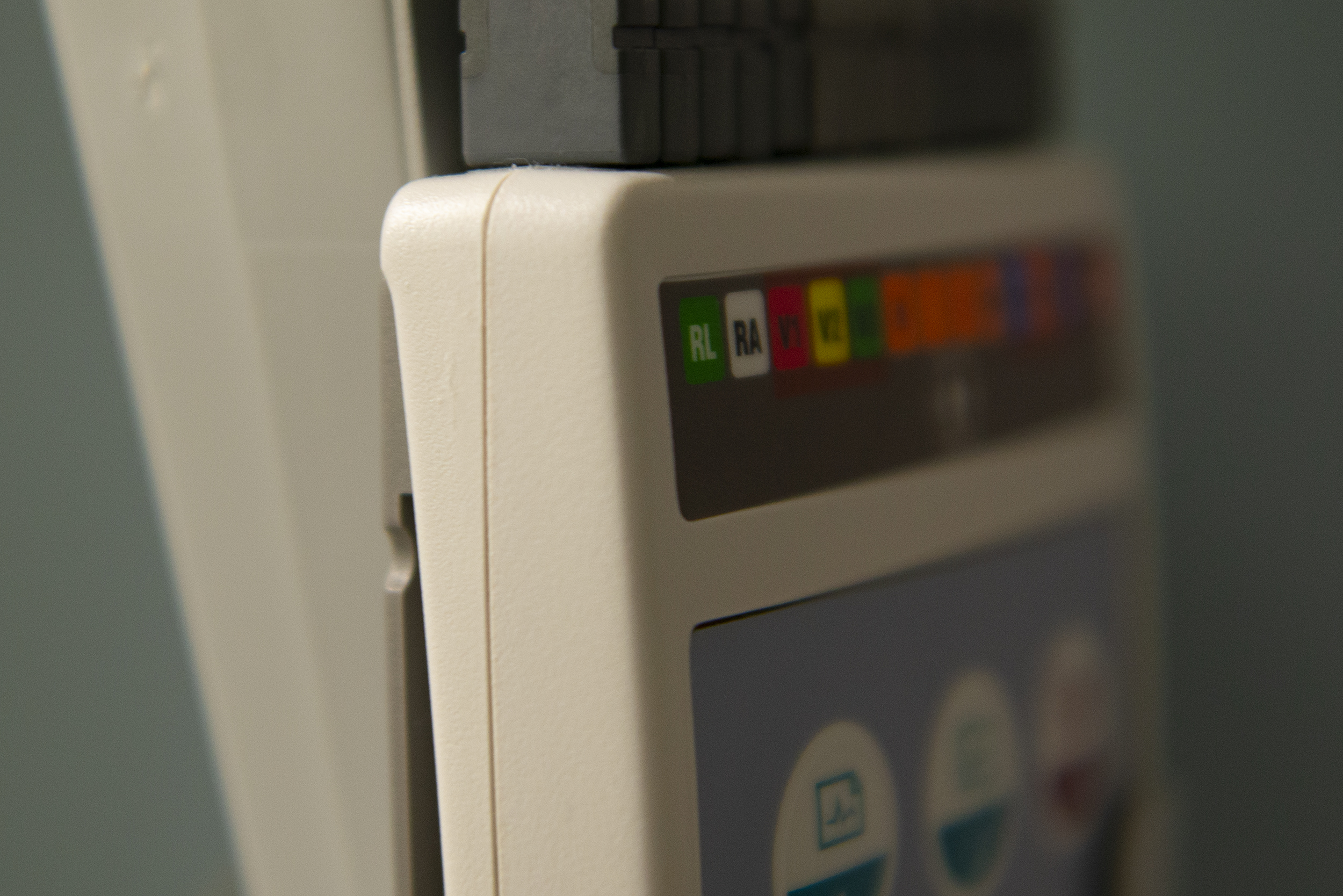Bariatric Surgery and cardiovascular disease
Significant evidence exists to suggest that weight loss reduces cardiovascular risk and improves cardiovascular outcomes, with bariatric surgery acknowledged as the most effective and durable means of achieving and sustaining weight loss in obese individuals.
Improve Your Modifiable Risk

What is Cardiovascular Disease?
Heart or cardiovascular disease is the collective term for diseases of the heart and circulatory system, including stroke, coronary heart disease, aortic disease and peripheral arterial disease. Hypertension (high blood pressure) and atherosclerosis (hardening of the arteries) are thought to be contributory factors in a significant number of cases of cardiovascular disease.
Non-modifiable risk factors for developing cardiovascular disease include age, gender and family history. Men are more susceptible to cardiovascular disease generally and also tend to develop heart disease earlier in life than women, although this gender difference narrows after the menopause, when women’s level of risk increases sharply.
Cardiovascular Physiology
The cardiovascular system comprises the heart, blood and blood vessels. It serves to transport nutrients, hormones and oxygen to the body’s tissues whilst removing carbon dioxide and other waste products for disposal. It also regulates body temperature and cell fluid contents as well as providing protection from pathogens by transporting white blood cells and antibodies around the body.
The circulatory system includes the pulmonary and systemic circulatory networks. The pulmonary circulatory system transports deoxygenated blood from the heart to the lungs and returns oxygenated blood to the heart to be transported around the rest of the body via the systemic circulatory system.
The heart itself is a hollow fist-sized muscle containing four chambers: the atria and ventricles. The atria are reservoirs for the ventricles, which act as pumps to drive blood around the body. Deoxygenated blood from the systemic circulatory system is received by the right atrium and pumped into the pulmonary circulatory system by the right ventricle. The left atrium receives oxygenated blood from the lungs to be pumped into systemic circulation by the left ventricle. A valve regulates blood flow between atrium and ventricle in each case, with a second valve controlling blood flow as it exits the ventricle into the pulmonary or systemic circulatory system.
A membranous dual-layered structure known as the pericardium surrounds the heart. Beneath this, the walls of the heart comprise three distinct layers: the epicardium, or outer layer, the muscular myocardium, which causes the heart to pump, and the endocardium; an inner layer that lines the atria and ventricles.
Various types of blood vessels exist to carry blood around the body. The arteries transport blood away from the heart and have thick muscular walls designed to withstand high blood pressure and flow. Branching out from the arteries are the arterioles; narrower blood vessels with thinner muscular walls that deliver blood to the smallest blood vessels, known as capillaries. Capillary walls are very thin in order to facilitate exchange of oxygen, water, nutrients and waste products between the circulatory system and surrounding tissues. Small venules draw deoxygenated blood away from the capillaries, for transportation back to the heart via the larger veins. The heart itself is supplied with blood via a network of veins and arteries known as the coronary vessels, so called because they surround the heart like a crown.
Cardiovascular Conditions
Stroke
A stroke occurs when the blood supply from the heart to the brain is interrupted, potentially resulting in brain damage. Most strokes are categorized as being either ischemic or hemorrhagic:
A hemorrhagic stroke occurs when a blood vessel in or near the brain ruptures. Sometimes an existing weak or thin area of arterial wall known as an aneurism can become stretched to the point of rupture by pressure from the flow of blood. Other causes of hemorrhagic stroke include blood vessel abnormalities and traumatic head injury. Treatment most frequently involves urgent cranial surgery.
Ischemic strokes are more common and occur when a blood clot blocks the flow of blood through an artery or vein to some part of the brain. A blood clot that originates within the heart or other part of the body and travels through the circulatory system to block a blood vessel elsewhere is known as an embolism, whilst a blood clot that forms inside a blood vessel, causing it to narrow such that the flow of blood is restricted is known as a thrombosis. Ischemic strokes are usually treated using thrombolytic or “clot busting” drugs, which need to be administered within the first three to five hours after onset of a stroke in order to be effective.
The long-term effects of a stroke depend upon the area of brain affected, the length of time for which blood flow was restricted and the efficacy of any treatments administered. A transient ischemic attack (TIA) or mini-stroke, involving only a temporary interruption in blood supply, does not cause significant permanent damage and symptoms frequently resolve within 24 hours. A hemorrhagic stroke is much more likely to be fatal than an ischemic stroke, but both forms can cause serious long-term disability.
Coronary Artery Disease
Coronary artery disease (CAD) occurs when the coronary arteries become narrowed, potentially restricting blood supply to the heart. This most commonly occurs due to atherosclerosis; a chronic condition caused by accumulation of fatty substances such as cholesterol within blood vessel walls. Where such patches or plaques form, an inflammatory response is triggered, causing the affected vessel to narrow, thus increasing blood pressure and restricting blood flow. Atherosclerosis can also be an underlying cause of ischemic stroke, as sections of fatty plaque can break away to create an embolism.
Complete blockage of a coronary artery results in myocardial infarction or coronary thrombosis, more commonly known as a heart attack. If blood flow through the artery is not quickly restored, the affected section of heart muscle becomes permanently damaged as the cells in that area begin to die, to be replaced by scar tissue. Once damaged in this way, the heart functions less efficiently, and an arrhythmia, in which the heart beats too fast or slow, or irregularly, can occur, leading to increased risk of cardiac arrest. Other complications of heart attack include heart rupture, where the muscles or walls of the heart split apart after undergoing extensive damage, heart failure, in which the heart loses its ability to pump blood effectively, and cardiogenic shock, in which the heart is unable to pump sufficient blood to keep tissues and organs adequately supplied with blood and oxygen.
Peripheral Arterial Disease
Peripheral arterial disease (PAD), also known as peripheral vascular disease, is a narrowing of one or more of the arteries that supply blood to the leg muscles, usually as a result of atherosclerosis. Whilst not immediately as serious as stroke or CHD, PAD is a progressive condition that can, if left untreated, eventually lead to tissue death in the lower leg, potentially requiring amputation.
Aortic Disease
The aorta is the largest artery in the body, responsible for carrying oxygenated blood away from the heart. It passes through the chest and abdomen, branching into a network of smaller arteries and other blood vessels that form the systemic circulatory system. Various forms of aortic disease exist, including aortic valve disease, aortic dissection and aortic aneurism, of which the latter is the most common.
Aortic aneurisms can occur anywhere on the aorta, but are most frequently located within the abdomen and are rarely symptomatic, although some individuals report abdominal or back pain as the aneurism enlarges. If rupture occurs, pain can be acute and prognosis is relatively poor.
Aortic walls are particularly prone to atherosclerosis, and hypertension is known to increase the risk of aneurism rupture, but these factors alone do not fully account for pathogenesis of the condition and genetics, autoimmune factors, infection and trauma have all been identified as possibly contributing towards formation of the initial arterial defect. Smoking is also a significant risk factor for abdominal aortic aneurisms.
Obesity and Cardiovascular Disease
Obesity is an independent risk factor for cardiovascular disease, with central obesity particularly implicated. Carrying excess weight is thought to affect the heart and circulatory system through a variety of mechanisms, and cardiovascular disease in the presence of obesity can present additional challenges in terms of clinical evaluation and diagnosis.
The volume of blood pumped by the left ventricle in one beat is known as stroke volume, whilst cardiac output is the total volume of blood pumped by the heart per minute. Carrying excess body weight creates increased metabolic demand, such that the overall cardiac workload for any given physical activity increases relative to total adipose mass, with obese individuals displaying increased total blood volume, stroke volume and cardiac output relative to non-obese individuals. This can be partially accounted for by the fact that adipose tissue is vascular, being supplied with blood and oxygen by a network of capillaries. As heart rate generally increases very little in relation to body mass, it is thought that increased cardiac output is largely attributable to an increase in stroke volume. Elevated stroke volume can stretch the ventricle walls, causing the cardiac muscle to contract with greater force. Over time this may lead to increased myocardial mass, with chamber walls thickening and losing elasticity, resulting in a condition known as left ventricular hypertrophy (LVH).
LVH is a strong marker of preclinical cardiovascular disease, and is associated with increased cardiovascular morbidity and mortality. LVH is also a known risk factor for left ventricular systolic dysfunction; a condition in which the ability of the left ventricle to contract and pump blood is impaired. Left ventricular diastolic dysfunction, in which the left ventricle fails to fill properly between contractions, can also occur, with levels of left ventricular systolic and diastolic functional impairment tending to increase with longer durations of obesity.
Obese individuals commonly display reduced sensitivity to the hormone insulin, which plays a key role in controlling blood glucose levels. Insulin resistance is frequently a precursor to type 2 diabetes and is strongly associated with other obesity-related conditions including obstructive sleep apnea and polycystic ovarian syndrome. It is also a known risk factor for cardiovascular disease and there is some evidence to suggest that insulin resistance may contribute towards development of LVH, although the mechanisms underlying this link remain unclear. Several studies have observed progressive increases in left ventricular mass with worsening glucose tolerance and it has been hypothesized that the elevated levels of insulin present as a result of insulin resistance may promote excessive myocardial tissue growth. Evidence also exists to suggest that baseline degree of insulin resistance may be more predictive of cardiovascular benefit from bariatric surgery than presurgical BMI or postsurgical weight loss.
High cholesterol or hypercholesterolemia is very common in obese individuals and is associated with increased risk of cardiovascular disease due to the role of circulating LDL cholesterol in the pathogenesis of atherosclerosis. Obesity can also lead to build-up of fat pads around organs including the heart, causing dysfunction via mechanical compression or through secretion of various factors that act locally upon the organ’s cells. Fat can also accumulate in non-adipose tissue, causing damage or cell death; a metabolic syndrome known as lipotoxicity, thought to be implicated in the pathogenesis of disease of the myocardium, or cardiomyopathy.
Hypertension or high blood pressure is another condition strongly associated with overweight and obesity that carries additional risk for cardiovascular disease. A direct relationship exists between elevated blood pressure and increased BMI, with the presence of central obesity indicative of particular susceptibility to hypertension. A direct relationship also exists between the duration and level of elevated blood pressure and the presence of LVH. Hypertension can accelerate the progression of atherosclerosis and is also strongly associated with development of cardiac arrhythmias.
The Obesity Paradox
Some studies have found that, for certain conditions including heart failure, coronary heart disease and peripheral arterial disease, obese individuals display superior survival rates and have less adverse outcomes when compared to non-obese controls. Whilst the reasons for this are not fully understood, several possible explanations exist. One hypothesis is that the severe wasting that can accompany chronic cardiac problems, known as cardiac cachexia, could have caused weight loss in the most profoundly ill and therefore most at risk subjects during the course of the studies. It has also been suggested that obese individuals may receive particularly intensive treatment for cardiovascular conditions.
In the case of coronary heart disease, the paradoxical relationship is not present when waist circumference rather than BMI is used as a measure of obesity, suggesting that the presence of central obesity may be more predictive of cardiovascular outcome than elevated body mass. In other studies, it has been noted that only overweight and moderately obese individuals appear to experience improved outcomes, with severely obese individuals continuing to display greatest mortality risk.
How Does Weight Loss Help Cardiovascular Disease?
Post-bariatric weight loss has been shown to result in decreased levels of oxygen consumption and cardiac output proportional to the amount of weight lost, with stroke volume falling as blood and heart volume decrease. Whilst significant reductions in left atrial and ventricular diameter have not been observed, there is evidence to suggest that LVH regression can occur in individuals without overt cardiovascular disease, which is of particular significance since regression of LVH is associated with reduction in future cardiovascular risk. When postsurgical LVH regression does occur, it appears to be independent of improvements in blood pressure, suggesting that the metabolic consequences of obesity may have greater influence upon left ventricular mass than hemodynamics.
For severely obese individuals with existing cardiovascular disease, bariatric surgery is associated with a reduced risk of all-cause mortality, even in those with a history of major cardiovascular events. Bariatric procedures typically have a beneficial effect upon other obesity-related cardiovascular disease risk factors, such as insulin resistance, type 2 diabetes, hypertension and hypercholesterolemia, and post-bariatric weight loss can also facilitate participation in regular exercise, which contributes towards reduced cardiovascular risk.






